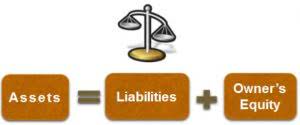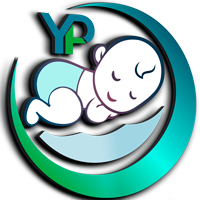
Cost of goods manufactured is the total of all the raw materials, direct labor, and allocated manufacturing overhead used during the period to create completed products. To calculate direct material costs in a manufacturing business, add your beginning direct materials to your direct materials purchased and subtract the ending direct materials for the period. Add direct material ($17,000), direct labor ($80,000), and manufacturing overhead ($170,000) to arrive at the total manufacturing cost for the year, which is $205,000. Another advantage is that having a better understanding of total manufacturing cost allows a business to budget better for these costs in the future.
What is Direct Labor?
These include direct material and labor costs, as well as manufacturing overheads. Cost of Goods Manufactured (COGM) is a term used in managerial accounting that refers to a schedule or statement that shows the total production costs for a company during a specific period of time. Just like the name implies, COGM is the total cost incurred to manufacture products and transfer them into finished goods inventory for retail sale.

How Crucial is Cloud Software Security for Your Business?
It might also push management in the direction of outsourcing some production activities that are generating excessively high scrap levels in-house. Either approach has the added benefit of reducing inventory storage costs, which reduces factory overhead charges. This concept suggests that as production volumes increase, the cost per unit of production tends to decrease. This reduction occurs because fixed costs (such as machinery and overhead expenses) are spread over a larger number of units. Consequently, larger production runs often lead to lower per-unit costs.
Direct Labor
This is important from an accounting point of view as it pinpoints the expense that a company needs to recover per sold product, in order to break even. Material costs are the costs of raw materials used in manufacturing the product. The key takeaway of this case study is that understanding the fluctuations in manufacturing costs can empower companies to make informed and timely choices between outsourcing and in-house production. These informed decisions help in maximizing productivity and profitability. Now, add the value of existing inventory to the cost of purchasing new inventory to calculate the cost of direct materials. The total manufacturing cost formula is a simple equation in which all of these are added together.
- It may also trigger an understanding of which suppliers are charging too much, which may lead to a realignment of the company’s mix of suppliers towards those more willing to work with the company on price.
- To calculate direct material costs in a manufacturing business, add your beginning direct materials to your direct materials purchased and subtract the ending direct materials for the period.
- The calculation breaks down your manufacturing costs in a way that makes your expenses easy to analyze.
- Variable costs are the same cost per unit but the total cost depends on the quantity produced, used, or sold.
- The cost of direct materials includes the direct materials, the inventory at the beginning of the period and the inventory at the end of the period.
- As mentioned in the preceding section, a mixed cost has both a variable and a fixed component.
- Overhead expenses can really impact your balance sheet and income statement, so you need to track these costs.

An activity driver is an activity that causes the incurrence of the variable cost. Common activity drivers are units of sales, units of production, direct labor hours worked, or machine hours used. These indirect costs, also called factory or manufacturing overheads, include costs related total manufacturing cost formula managerial accounting to property tax, insurance, maintenance, and other indirect operations that support the production process. In periodic inventory systems, where things are done manually or using spreadsheets, regular stocktakes need to be performed and material invoices summed up to get the numbers right.
- This looks at all stages of the manufacturing process from raw materials to work-in-progress to final result.
- Consider an example of calculating manufacturing costs for Flying Pigs Corporation and the company’s costs to make roller skates.
- The total manufacturing cost formula can be used alongside your net revenue to work out how profitably your business is producing goods.
- This makes them much more precise than approximating values manually and also provides a good litmus test for comparing the measured KPIs against their theoretical values.
- Shaun Conrad is a Certified Public Accountant and CPA exam expert with a passion for teaching.
- Cost estimates are less likely to be accurate when production falls outside of the relevant range.
- Be sure not to underestimate any of your expenses for those three categories.
CSA and CSV: Streamlining Life Sciences Software Validation
Examples include metals, plastics, electronic components, and any other materials that are integral to the final product’s composition. The relevant range of production is the range between a minimum and a maximum production activity where certain revenue and expense levels can be expected to occur. Revenue and expense amounts will likely increase or decrease when production activity falls outside of the relevant range. In a manufacturing environment, product and period costs can be estimated with a reasonable degree of accuracy within this relevant range of production. Cost estimates are less likely to be accurate when production falls outside of the relevant range.
- Look at your payroll software and total the gross wages of your direct laborers for the year.
- A scatter plot shows if a linear relationship exists between two sets of data.
- To reduce manufacturing overhead costs, focus on improving efficiency, reducing waste, negotiating better supplier contracts, and investing in technology to automate tasks.
- Lean manufacturing principles aim to eliminate waste, optimize processes, and improve efficiency, thereby reducing overall manufacturing costs and enhancing competitiveness.
- Mattias is a content specialist with years of experience writing editorials, opinion pieces, and essays on a variety of topics.
- The high-low method is a simple and widely used method to estimate a mixed cost’s variable and fixed components.


